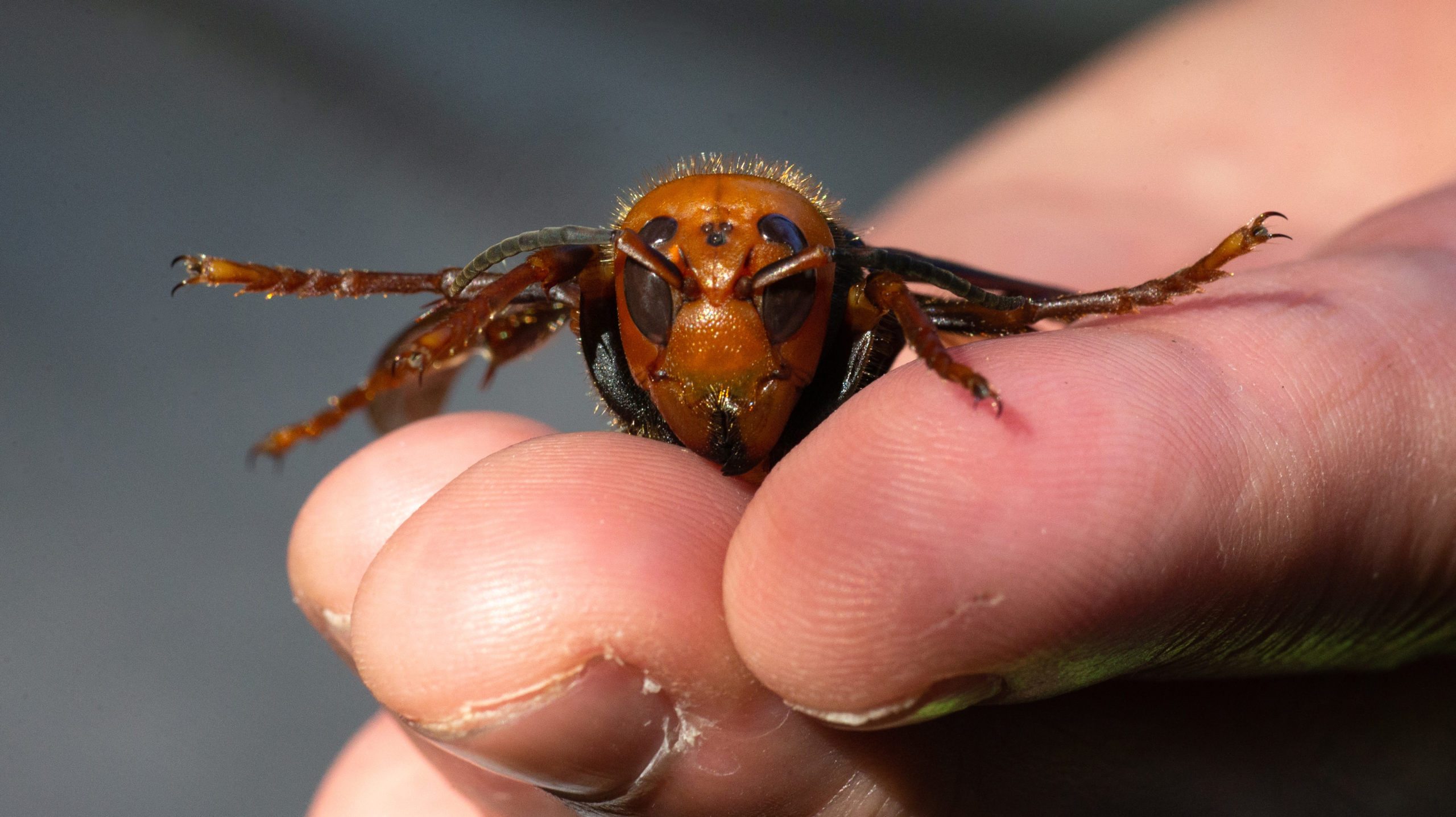Attacks by giant hornets, relatives of murder hornets, on honeybee hives are absolutely horrifying. Worker hornets identify bee hives and then bring in reinforcements of two to dozens of others, slaughtering bees at a rate of up to one per 14 seconds and sawing off their heads to gather protein-rich thoraxes and feast on pupae and larvae.
The hornets are too well armoured for direct attacks with stingers, but in the past, scientists have observed Japanese honeybees swarming the attackers and cooking them alive in body heat. New research published in PLOS ONE on Wednesday highlights another defensive strategy that Asian honeybees use fend off giant hornets: animal poop.
[referenced id=”1525059″ url=”https://gizmodo.com.au/2020/10/what-to-do-if-you-think-you-see-a-murder-hornet/” thumb=”https://gizmodo.com.au/wp-content/uploads/2020/10/31/cwrrgzc0wzs35ndefmf5-300×168.jpg” title=”What to Do If You Think You See a Murder Hornet” excerpt=”Last week — in what might somehow qualify as good news for 2020 — bug scientists in Washington State reported discovering and then destroying the first known Asian giant hornet nest in the U.S. These invasive predators pose a serious threat to bees, and researchers are desperate to stop their…”]
The study began when University of Guelph professor Gard Otis and another member of the research team learned from a Vietnamese beekeeper that surface areas near the entrances to Eastern honeybee (Apis cerana) hives were smeared with buffalo poop. From there, the researchers learned that the bees were actively gathering droppings from local fauna as well as livestock to ward off Vespa soror, an aggressive species of hornet that gangs up on honeybees. Per the Guardian:
They found these hornets spent less than half the time at nest entrances with dung spotting, compared with clean hives, and 94% less time trying to chew their way in. A final experiment discovered that hives daubed with the secretions that giant hornets use to flag nests for attack were quickly plastered with poo.
After contacting other bee experts, the researchers learned that the spotting behaviour is widespread throughout Vietnam and reported in China, Thailand, Bhutan, and Nepal. Some species of stingless bee were known to collect animal faeces and incorporate it into their nests, but this was the first report for honey bees.
That’s not all. Researchers wrote in the study they also observed the bees gathering soap scum, and in one case, perhaps smearing a hive in urine:
In addition to animal faeces, we saw foragers collecting soap scum and one hive had spots applied to it that were bright blue, but we could not determine their origin. On one occasion, a hive smelled strongly of urine and we found workers visiting a container of human urine nearby.
The “collection of solid filth” is a previously unobserved behaviour in the Apis genus, the researchers wrote. Only stingless bees were previously known to collect filth, and as building material for hives. It’s not clear why the poop was effective at repelling hornets — it’s possible that the hornets simply try to avoid faeces in general, that the bees were gathering faeces that contained plant matter with specific repellent compounds, or that the stink simply makes it hard for the hornets to smell targets or coordinate attacks. Otis said in a statement that the way the honeybees use animal dung appears to hit several criteria of tool use, in that the bees purposefully hold and manipulate an object from the environment to achieve a specific goal.
“I was shocked [by the use of faeces] because bees have such a good reputation for being clean,” Wellesley College professor and study lead Heather Mattila told the Guardian, a shock shared by researchers not associated with the study. “They have hot, wet, permanent homes that are a great place for disease to grow and are filled with babies and food.”

Vespa soror, the species of hornet observed in the study, is a close relative of Vespa mandarinia, another species of hornet native to Asia that has become an invasive species in U.S., and earned moniker the “murder hornet” for its assault on bees. Outside Asia, bees haven’t been exposed to these hornets before, and don’t know how to defend against them. In the U.S., where honeybee populations are already under threat from colony collapse disorder, that brings the prospect that the invasive hornets could wreak havoc if they gain a foothold.
The first time she heard about Asian giant hornets in the U.S., Mattila added, “I was so worried I couldn’t sleep. I thought, ‘These bees are going to get massacred.’ They just don’t have the exposure to these hornet species and, as a result, they are sitting ducks.”
According to CNN, of the 72 beekeepers surveyed in the study, five kept Western honeybees, which are native to the U.S. Unfortunately, none of those apiarists spotted poop on their hives. Of the remaining 67 beekeepers that kept Eastern honeybees, 63 had hives boasting faecal defences.
